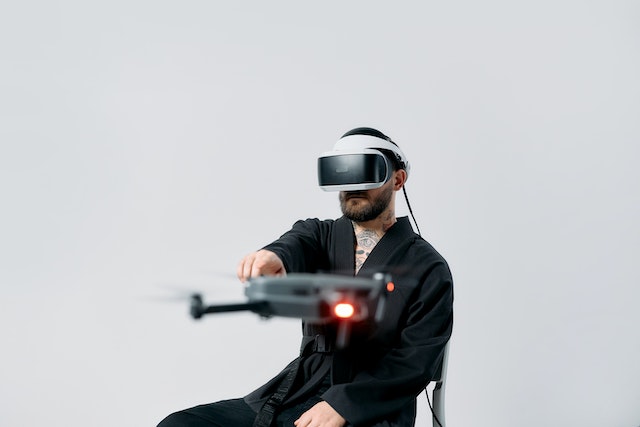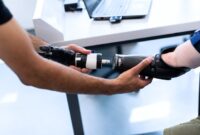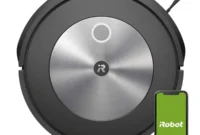Racing drones have taken the world by storm, providing an exhilarating experience for both pilots and spectators. If you’re fascinated by the world of drone racing and want to master the art of flying these high-speed machines, you’ve come to the right place. In this article, we will explore the tips and techniques that will help you become a skilled racing drone pilot. From understanding the components of racing drones to mastering advanced flight maneuvers, we will cover it all. So fasten your seatbelt and get ready to soar through the skies!

Understanding Racing Drones
What are Racing Drones?
Racing drones, also known as FPV drones (First-Person View drones), are small, agile quadcopters specifically designed for high-speed racing. These drones are built with lightweight materials, powerful motors, and advanced flight controllers to achieve incredible speeds and maneuverability. Unlike consumer drones, racing drones prioritize performance over features like camera stabilization or long flight times.
Components of Racing Drones
To better understand racing drones, let’s take a closer look at their essential components:
- Frame: The frame of a racing drone provides structural integrity and protects its internal components. Frames are usually made of carbon fiber or other lightweight materials to maximize speed and agility.
- Motors: Racing drones are equipped with brushless motors that generate immense power to propel the drone at high speeds. These motors are often rated by their size and KV (RPM per volt) values.
- Electronic Speed Controllers (ESCs): ESCs regulate the power supply to the motors, translating the flight controller’s commands into rotational motion.
- Flight Controller: The flight controller is the brain of the racing drone, processing data from various sensors and controlling the drone’s flight characteristics. It receives input from the pilot through a radio transmitter and executes the desired maneuvers.
- FPV System: FPV systems consist of a camera mounted on the front of the drone and a video transmitter that sends a live feed to the pilot’s goggles or monitor. This enables pilots to fly the drone from a first-person perspective.
Getting Started with Racing Drones
Choosing the Right Racing Drone
When selecting a racing drone, consider the following factors:
- Skill Level: Beginners should opt for a ready-to-fly (RTF) drone, while more experienced pilots can choose to build their own custom drones.
- Budget: Determine your budget and look for racing drones that fit within your price range.
- Features: Consider features such as flight time, durability, camera quality (if recording races), and ease of repair.
- Community Support: Check if the drone has an active online community for support and learning.
Assembling and Setting Up Your Racing Drone
Once you have your racing drone, follow these steps to set it up:
- Unboxing: Carefully unbox all the components of your racing drone, ensuring that nothing is damaged during shipping.
- Frame Assembly: Follow the instructions provided with the drone to assemble the frame and attach the motors securely.
- Electronics Installation: Install the flight controller, ESCs, and FPV system according to the manufacturer’s instructions.
- Radio Transmitter Binding: Bind your radio transmitter to the receiver on the drone, enabling control over the flight.
- Software Configuration: Connect the flight controller to a computer and configure it using the appropriate software, adjusting settings like PID (Proportional-Integral-Derivative) values.
- Propeller Attachment: Attach the propellers to the motors, ensuring they are correctly balanced and tightened.
- Battery Connection: Connect the drone’s battery, making sure it is securely fastened and fully charged.
- Final Checks: Perform a thorough pre-flight check, verifying that all components are functioning correctly.
Mastering Basic Flight Maneuvers
To become a skilled racing drone pilot, it is essential to master the basic flight maneuvers. These maneuvers include throttle control, pitch and roll, and yaw control.
Throttle Control
Throttle control determines the altitude and vertical speed of the racing drone. By manipulating the throttle stick on the radio transmitter, you can increase or decrease the power to the motors, controlling the drone’s climb and descent.
Pitch and Roll
Pitch and roll refer to the forward-backward and side-to-side movements of the drone, respectively. By tilting the control sticks on the transmitter, you can command the drone to move in the desired direction.
Yaw Control
Yaw control allows the drone to rotate horizontally around its central axis. By using the left or right control stick, you can make the drone turn left or right.
Advanced Racing Techniques
Once you have a solid grasp of the basic flight maneuvers, it’s time to delve into advanced racing techniques.
FPV (First-Person View) Flying
FPV flying is an exhilarating experience that allows pilots to immerse themselves in the drone’s perspective. By wearing FPV goggles or using an FPV monitor, you can see exactly what the drone sees in real-time. This enables precise navigation through racing courses and enhances your overall control.
Racing Drone Settings and Tuning
To optimize the performance of your racing drone, you can adjust various settings. These include PID values, throttle response, flight modes, and expo rates. Experimenting with these settings and fine-tuning them according to your flying style can significantly enhance your drone’s speed and maneuverability.
Racing Drone Piloting Skills
Building piloting skills is crucial for becoming a successful racing drone pilot. Practice regularly in open areas or designated racing tracks, focusing on maintaining control, executing sharp turns, and navigating challenging obstacles. Gradually increase the complexity of your flights as you become more proficient.
Safety Precautions
As with any hobby involving flying machines, safety should be a top priority when racing drones. Here are some safety precautions to follow:
- Fly in Open Areas: Choose spacious areas away from people, buildings, and other aircraft.
- Respect Local Regulations: Familiarize yourself with local laws and regulations regarding drone flying.
- Wear Protective Gear: Use safety goggles or FPV goggles to protect your eyes during flights.
- Maintain Distance: Avoid flying near power lines, trees, or other potential obstacles.
- Battery Safety: Handle lithium polymer (LiPo) batteries with care and follow proper charging and storage procedures.
Racing Drone Maintenance
Proper maintenance is vital to keep your racing drone in optimal condition. Here are some maintenance tips:
- Cleanliness: Regularly clean your drone to remove dirt, dust, and debris that could affect performance.
- Motor Care: Check the motors for any signs of wear or damage and replace them if necessary.
- Propeller Replacement: Replace damaged or worn-out propellers to ensure smooth and stable flights.
- Software Updates: Stay up to date with firmware updates for your flight controller and other components.
- Battery Care: Follow proper charging, storage, and usage guidelines to prolong the life of your drone’s batteries.
Joining Racing Communities
To fully immerse yourself in the world of racing drones, consider joining racing communities. These communities provide valuable knowledge sharing, training opportunities, and the chance to connect with fellow enthusiasts. Attend local races, participate in online forums, and join social media groups dedicated to racing drones.
Conclusion
Mastering racing drones requires dedication, practice, and a solid understanding of the techniques involved. By starting with the basics, gradually progressing to advanced maneuvers, and prioritizing safety, you can become a skilled racing drone pilot. So, strap in, embrace the thrill of high-speed flights, and unlock the full potential of your racing drone.
FAQs
Q1: Can I use any drone for racing, or do I need a specific racing drone? A1: While you can technically race with any drone, dedicated racing drones are built for speed and agility, offering a better racing experience.
Q2: Are racing drones difficult to fly for beginners? A2: Racing drones can be challenging for beginners due to their high-speed nature. However, with practice and patience, anyone can learn to fly them proficiently.
Q3: How can I improve my racing drone’s speed? A3: Optimizing your drone’s weight, adjusting PID values, and selecting appropriate propellers can help improve its speed.
Q4: What should I do if my racing drone crashes? A4: After a crash, inspect your drone for any damage, particularly to the frame, motors, or propellers. Replace or repair any broken components before flying again.
Q5: Are there any racing drone competitions I can participate in? A5: Yes, there are various racing drone competitions held globally. Research local events or join online racing leagues to participate in competitive races.


